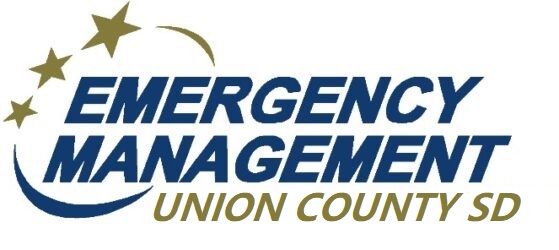 Union County Office of Emergency Management
Union County Office of Emergency Management
Jason Westcott, Emergency Management Director CEM-A
31312 473rd Avenue, Elk Point, SD 57025
Cell Phone: 605-670-1548
EMAIL: [email protected]
Facebook: Union County SD Emergency Management
MISSION STATEMENT
Our purpose is to protect Union County residents and their property from the effects of natural, manmade, and technological disasters. To fulfill our charge, we recognize the four phases of emergency management: Preparedness, Response, Recovery, and Mitigation.
Union County Office of Emergency Management Information
In South Dakota, all organized counties are required to have an emergency management organization and develop an emergency plan that is accordance with the state emergency management plan and program (SDCL 34-48A). As part of this organization, each county is required to have an emergency manager who is appointed by the executive officer or governing board. All 66 counties in South Dakota have, as a minimum, an emergency manager appointed to perform the duties associated with emergency management.
The Union County Office of Emergency Management (OEM) is charged with the overall mission of protecting Union County’s citizens and their property from the effects of natural, manmade and technological disasters. To accomplish this mission, the OEM recognizes and utilizes the four phases of emergency management:
- Preparedness : Actions taken in advance of an emergency or disaster, to develop operational capabilities and facilitate response operations. Such measures may include the development of plans, procedures, warning and communications systems, mutual aid agreements and emergency public information.
- Response : Action taken during or after an emergency or disaster, to save lives, minimize damages and enhance recovery operations. These measures include activation of the emergency operations center, plans, emergency communications system, public warning,. mass care, shelter, search & rescue and security measures.
- Recovery : Actions taken after the short or long term, to return vital life support systems to minimum standards or return life to normal or improved levels. Such measures include damage assessment, economic impact studies, supplemental assistance and mitigation of damages sustained.
- Mitigation : Actions that can be taken to eliminate or reduce the degree of long term risk. Such measures include building codes, public education, hazard vulnerability analysis, zoning laws and resolutions.
In all phases, the OEM works with Federal, State and Local partners to ensure a comprehensive emergency management system.
Examples Of The Duties Carried Out By The OEM
- Develop and maintain the County Emergency Operations Plan, testing this plan yearly through operational exercises.
- Develop, establish and maintain a warning system for the county.
- Maintain an inventory and utilization record of county equipment secured through emergency management sources.
- Prepares and presents a department budget to the appointing authority.
- Maintains liaison with county and state regional offices.
- Directs training of staff and volunteers and assists local jurisdictions with its training programs.
- Prepares informational material for dissemination to the public.
- Meets with interested groups to explain the emergency management program and to enlist their support and cooperation.
